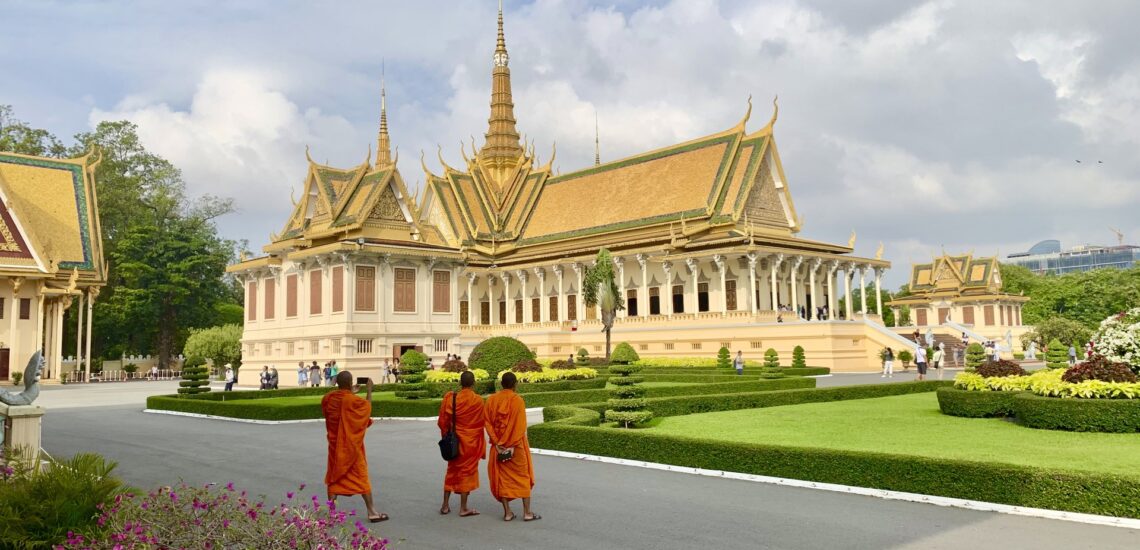Quick facts about Cambodia:
- Population: Approximately 17.5 million people.
- Capital: Phnom Penh.
- Official Language: Khmer.
- Currency: Cambodian riel.
- Government: Constitutional monarchy.
- Major Religion: Theravada Buddhism.
- Geography: Situated in Southeast Asia, bordered by Thailand, Laos, and Vietnam.
Fact 1: Cambodia in the past is the Great Khmer Empire
Cambodia, once known as the Khmer Empire, was a powerful and prosperous civilization that flourished in Southeast Asia from the 9th to the 15th century. The Khmer Empire was renowned for its advanced architecture, art, and culture, with Angkor serving as its capital and the center of its civilization. The empire’s most iconic legacy is the magnificent temple complex of Angkor Wat, which stands as a testament to the Khmer people’s ingenuity and creativity. 1000 years ago, the population of Angkor was about a million people, while major European cities were less than 100,000.
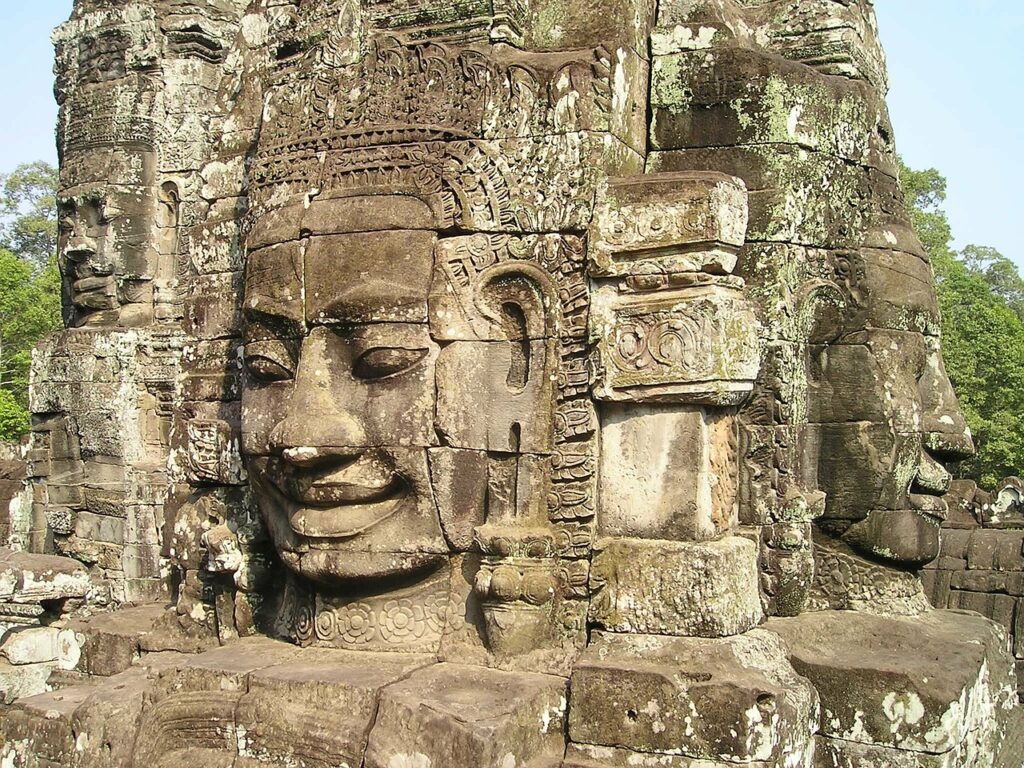
Fact 2: Many kinds of insects are eaten in Cambodia
In Cambodia, a wide variety of insects are consumed as part of the local diet. Insect cuisine is deeply rooted in Cambodian culture and has been a traditional source of protein for centuries. Commonly consumed insects include crickets, grasshoppers, beetles, silkworms, and various types of larvae. These insects are often fried, roasted, or grilled and seasoned with spices to enhance their flavor. In recent years, insect dishes have also gained popularity among tourists seeking unique culinary experiences. Additionally, insects are considered a sustainable and environmentally friendly food source, making them an important aspect of Cambodia’s culinary heritage.
Fact 3: There is a river in Cambodia that changes direction several times a year
The Tonlé Sap River in Cambodia is known for its unique phenomenon called the “reversal of flow.” During the dry season, from November to May, the Tonlé Sap River flows southward into the Mekong River. However, during the rainy season, from June to October, the river experiences a dramatic change in direction. The heavy rains cause the Mekong River to swell, pushing water back up the Tonlé Sap River and causing it to reverse its flow. This phenomenon leads to the flooding of the surrounding floodplains and the expansion of the nearby Tonlé Sap Lake, which is Southeast Asia’s largest freshwater lake. The reversal of flow is a crucial natural event that supports the region’s ecosystem and sustains the livelihoods of local communities dependent on fishing and agriculture.
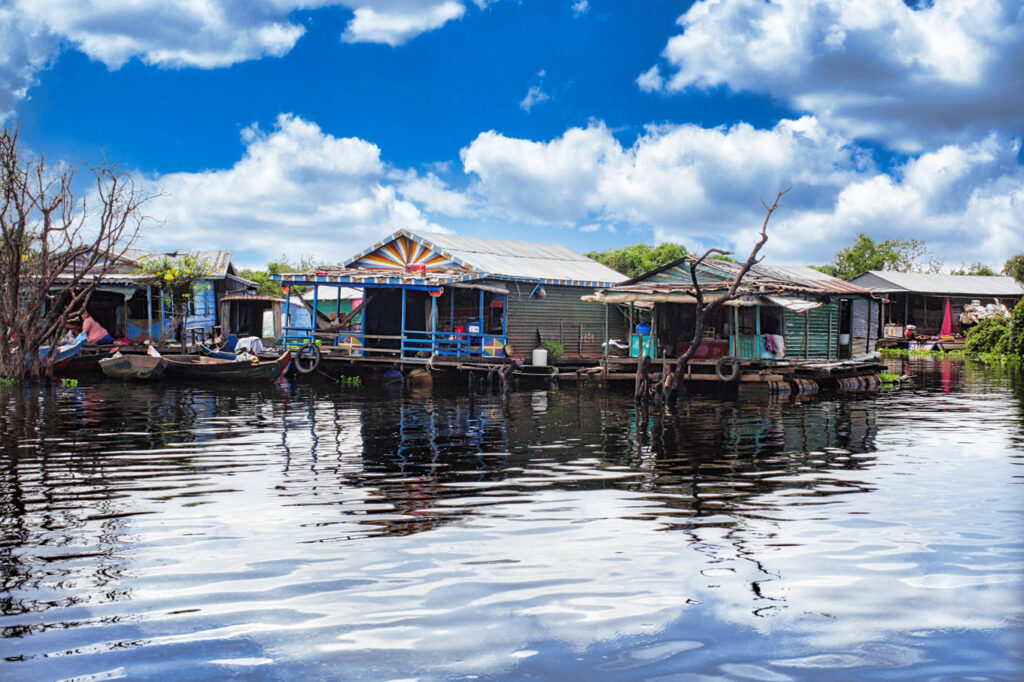
Fact 4: In Cambodia, a third of the population is under 15 years of age
As of recent estimates, approximately one-third of Cambodia’s population is under 15 years of age. This demographic distribution indicates a relatively youthful population in Cambodia, with a significant proportion of children and young people. This demographic trend has implications for various aspects of society, including education, healthcare, and social welfare programs.
Fact 5: Angkor Wat is the largest religious structure in the world
Angkor Wat, located in Cambodia, is indeed the largest religious structure in the world. It is a UNESCO World Heritage site and one of the most iconic landmarks in Southeast Asia. Built in the 12th century by the Khmer Empire, Angkor Wat originally served as a Hindu temple dedicated to the god Vishnu but later transformed into a Buddhist temple. The temple complex covers an area of over 162 hectares (about 402 acres) and features intricate architectural details, stunning bas-reliefs, and towering spires. Its grand scale and architectural significance make Angkor Wat a must-visit destination for travelers and a symbol of Cambodia’s rich cultural heritage.
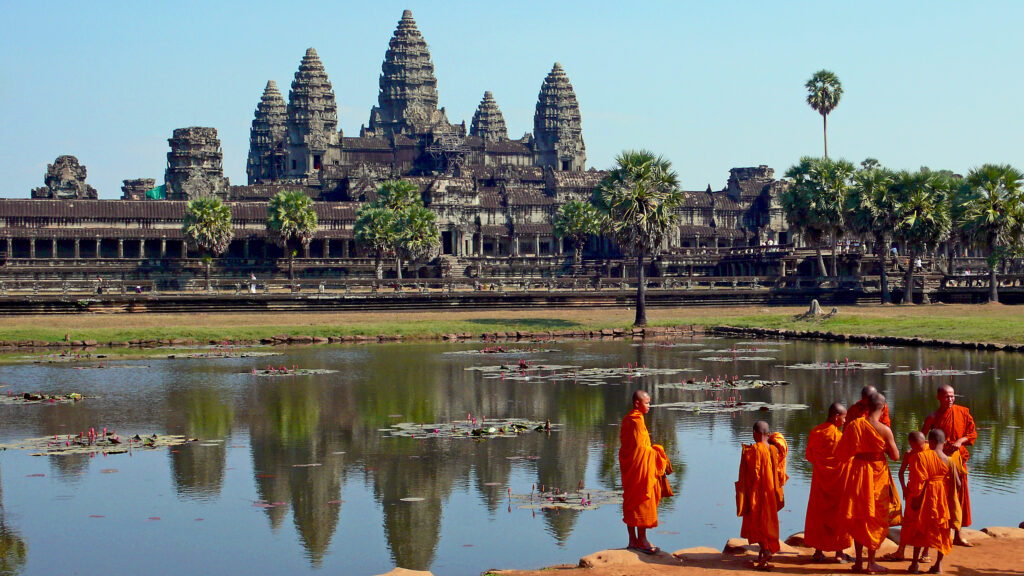
Fact 6: In the past, no one celebrated their birthday in Cambodia
In traditional Cambodian culture, birthdays are not widely celebrated, and many people may not keep track of their exact birth dates. Instead, age milestones such as reaching adulthood or becoming a monk are more significant events. However, with the influence of Western culture and modernization, birthday celebrations are becoming more common, especially among urban populations and younger generations. Still, the level of observance varies widely across different regions and social groups within Cambodia.
Fact 7: Cambodia has some unique animals
Cambodia is home to a diverse array of unique and fascinating animals due to its varied landscapes, including dense forests, wetlands, and mountainous regions. Some notable examples of unique animals found in Cambodia include:
- Giant Ibis: This critically endangered bird species is one of the rarest and largest ibises in the world, with distinctive long legs and a curved bill. It is considered Cambodia’s national bird.
- Kouprey: Often referred to as the “Cambodian forest ox,” the kouprey is a large, elusive wild cattle species native to Cambodia. It is considered one of the world’s most endangered large mammals, with few confirmed sightings in recent decades.
- Mekong Giant Catfish: The Mekong River, which flows through Cambodia, is home to the Mekong giant catfish, one of the largest freshwater fish species in the world. It can grow to enormous sizes, reaching lengths of over 3 meters and weighing hundreds of kilograms.
- Irrawaddy Dolphin: Cambodia’s stretch of the Mekong River is also home to the Irrawaddy dolphin, a unique species known for its rounded head and friendly appearance. It is considered critically endangered due to habitat loss and entanglement in fishing gear.
- Clouded Leopard: This elusive and beautifully patterned big cat is found in Cambodia’s dense forests. The clouded leopard is known for its distinctive cloud-like spots and arboreal lifestyle, often hunting and resting in the trees.
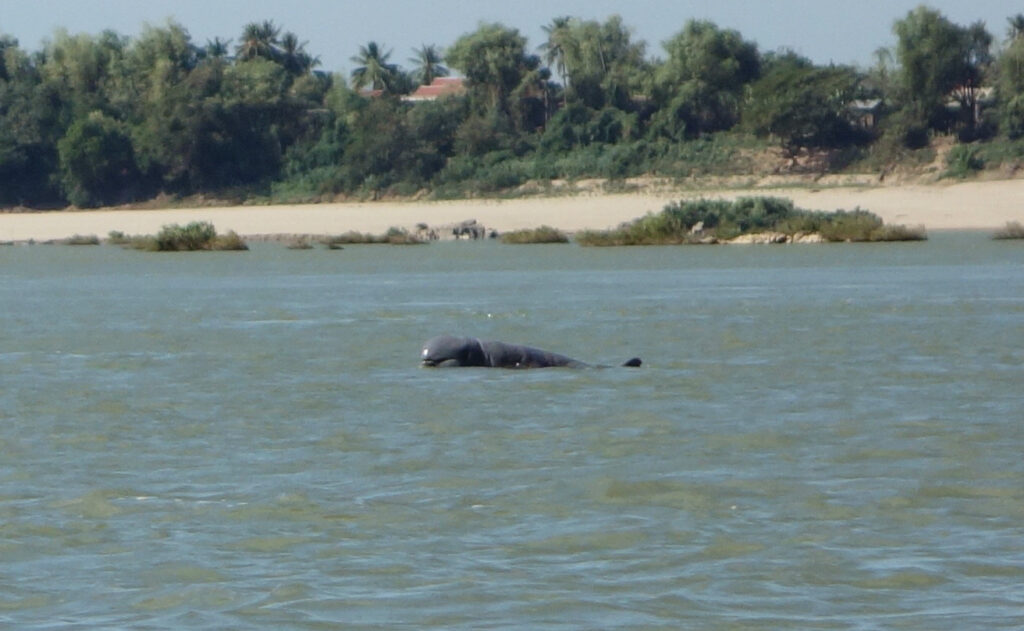
Fact 8: New Year’s Eve in Cambodia is celebrated in April
In Cambodia, New Year’s Eve, known as “Chaul Chnam Thmey” or “Khmer New Year,” is celebrated in April. The exact dates vary each year, as the celebration follows the Cambodian lunar calendar. Khmer New Year typically lasts for three days, with festivities including religious ceremonies, family gatherings, traditional dances, and other cultural activities. It marks the end of the harvesting season and the beginning of the new agricultural year. During this time, people clean and decorate their homes, offer prayers and offerings at temples, and engage in various rituals to bring good luck and prosperity for the year ahead. It is one of the most important and widely celebrated holidays in Cambodia, attracting locals and tourists alike.
Fact 9: The main means of transportation in Cambodia is tuk-tuks
Tuk-tuks are a popular and ubiquitous mode of transportation in Cambodia, particularly in urban areas and tourist destinations. These motorized three-wheeled vehicles, similar to auto rickshaws found in other parts of Southeast Asia, are widely used for short-distance travel within cities and towns. Tuk-tuks are known for their affordability, convenience, and ability to navigate through congested streets with ease. They are often adorned with colorful decorations and provide an open-air experience for passengers, allowing them to enjoy the sights and sounds of Cambodia’s bustling streets. Tuk-tuks are operated by local drivers who play a crucial role in Cambodia’s transportation network, offering both residents and visitors a convenient and accessible way to get around.
Note: If you plan to visit the country and rent a car, check here if you need an International Driver’s License in Cambodia to drive.

Fact 10: Cambodia had one of the bloodiest dictators ever
During the rule of the Khmer Rouge regime under the leadership of dictator Pol Pot in the late 1970s, Cambodia experienced a period of extreme brutality and violence known as the Cambodian genocide. During this dark chapter in Cambodian history, an estimated 1.5 to 2 million people lost their lives due to political persecution, forced labor, starvation, and execution.
Pol Pot’s radical communist regime aimed to transform Cambodia into an agrarian utopia by forcibly evacuating urban areas, abolishing currency and private property, and imposing strict agricultural labor policies. Intellectuals, professionals, religious minorities, and perceived enemies of the state were targeted and subjected to torture, imprisonment, and execution in what became known as the “killing fields.”

Published March 24, 2024 • 9m to read

